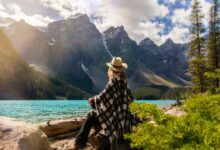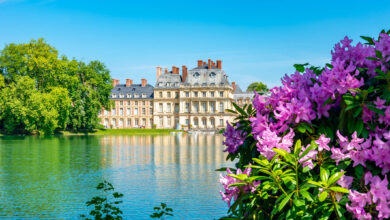What We See When We Look at Travel Photography

Travel photography stands as a vibrant intersection of exploration, art, and storytelling. It is about capturing moments that encapsulate the spirit of a place, its people, and the unique experiences that arise from the journey.
Understanding Travel Photography
Travel photography, in essence, is about encapsulating the spirit of a location in a visual format. It goes beyond mere aesthetics, aiming to tell stories, evoke emotions, and transcend cultural boundaries. It can vary from sweeping landscape shots to intimate street portraits, showcasing the diversity and richness of our world.
Essential Equipment for Travel Photography
3.1 Cameras
Your camera is your primary tool as a travel photographer. From high-end DSLRs to mirrorless cameras, the choice hinges on your personal needs, style, and budget. Mirrorless cameras, for instance, are popular due to their compact form and advanced features.
3.2 Lenses
The lenses you choose can greatly influence the outcome of your photos. Wide-angle lenses are ideal for landscapes and architectural shots, while telephoto lenses are perfect for wildlife or capturing details from afar.
3.3 Tripods
A reliable tripod can be a travel photographer’s best friend, especially when shooting long exposures or landscapes. Choose a sturdy yet lightweight model for easy transportation.
3.4 Miscellaneous Gear
Additional equipment like spare batteries, memory cards, filters, and a camera cleaning kit can be invaluable during your journey.
Composition Techniques for Stellar Travel Photos
4.1 Rule of Thirds
This fundamental principle involves dividing your frame into nine equal parts and placing your subject along these lines or at their intersections, lending balance and interest to your photo.
4.2 Leading Lines
Leading lines guide the viewer’s eye towards the main subject. They can be roads, fences, or even a row of trees – anything that creates a path for the eye to follow.
4.3 Frame within a Frame
This technique involves using elements within the scene to frame the main subject, adding depth and context to the photograph.
The Role of Lighting in Travel Photography
Lighting is a quintessential aspect of photography. Understanding the nuances of natural light, the golden hour, and the blue hour can significantly enhance your photos.
Street Photography: Capturing Life and Culture
Street photography involves capturing candid moments that reflect the local culture and lifestyle. It requires discretion, respect, and often, a fast shutter speed to catch fleeting moments.
Landscape Photography: Immortalizing Nature’s Art
From majestic mountains to serene seascapes, landscape photography is about immortalizing the beauty of nature. It often involves early mornings or late evenings to capture the best light, as well as patience and a keen eye for composition.
Photographing Local Flora and Fauna
Capturing the local flora and fauna can add a unique touch to your travel portfolio. This requires a deep understanding of the local ecosystem and often a good telephoto lens to capture wildlife without disturbing them.
Understanding the Local Culture: Respect and Etiquette
Respecting local customs and traditions is paramount in travel photography. Always seek permission before photographing people and be aware of any cultural sensitivities around photography.
Post-Processing: Enhancing Your Travel Photos
10.1 Basic Editing Techniques
Post-processing involves tweaking aspects like exposure, contrast, and color balance in software like Adobe Lightroom to enhance your photos. It’s important not to overdo it – the aim is to enhance, not distort, the original image.
10.2 Advanced Techniques
Advanced techniques such as focus stacking or HDR (High Dynamic Range) can be used to overcome challenging lighting conditions or achieve a greater depth of field. These techniques require a solid understanding of both your camera and editing software.
Sharing and Selling Your Travel Photographs
Sharing your work on social media or photography platforms can garner recognition and open up opportunities for selling your images. Stock photography websites or print-on-demand services are potential avenues for monetizing your work.
Overcoming Challenges in Travel Photography
From dealing with unpredictable weather to ensuring gear safety, travel photography presents its own set of challenges. Having backup plans, protecting your equipment, and staying adaptable can help navigate these hurdles.
Tips for Sustainable Travel Photography
Sustainable travel photography involves respecting the environment and contributing positively to local communities. This includes following the “leave no trace” principles, promoting responsible travel, and supporting local economies.
Building Your Brand as a Travel Photographer
Branding is crucial in standing out in the saturated field of travel photography. Consistency in style, a unique storytelling approach, and effective use of social media can significantly bolster your brand.
Conclusion
Travel photography is an adventurous and rewarding pursuit that opens up avenues for cultural exchange, creative expression, and endless exploration. As with any art form, it requires practice, patience, and a never-ending curiosity about the world.








